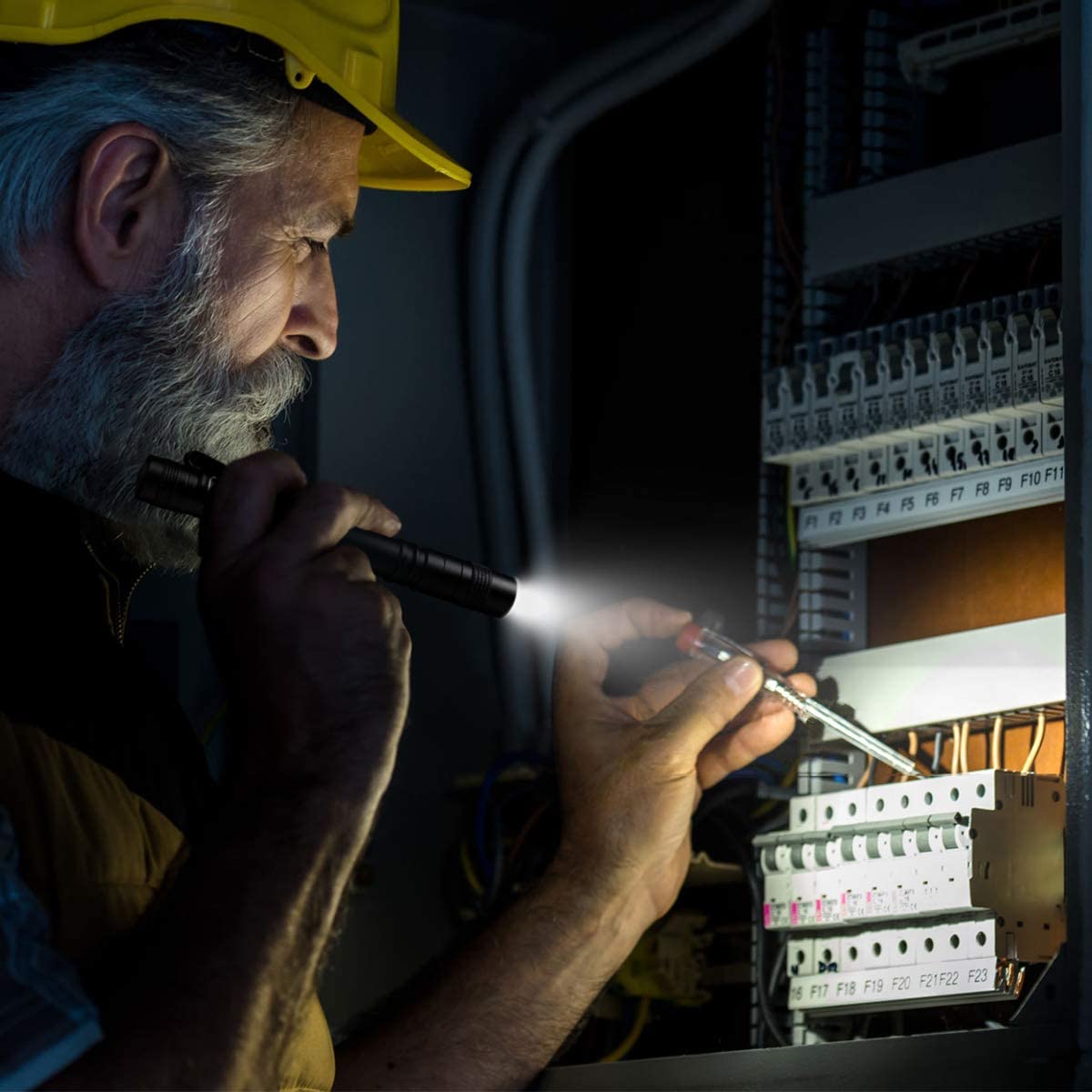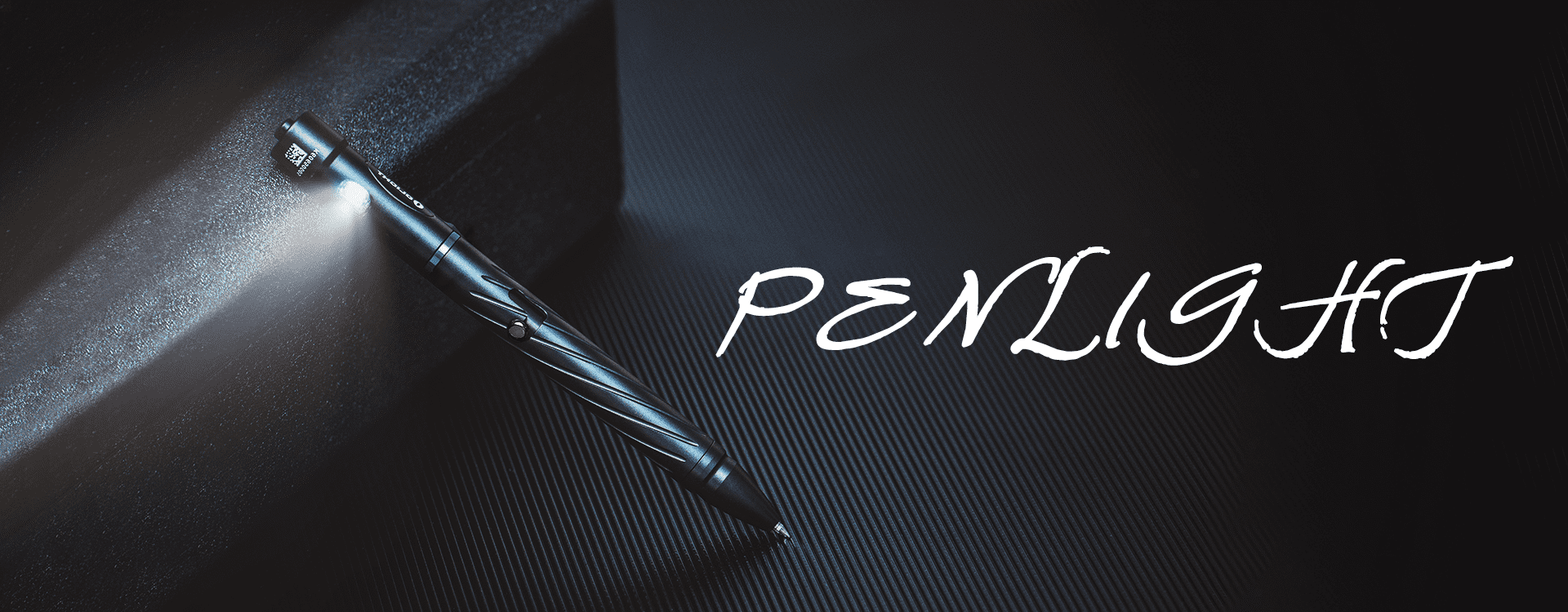As we dig into the history of a flashlight, reliable sources suggested that it was invented at the end of the 19th century. At that time, the pen had already experienced countless times of evolution. Yet, there hasn’t been any solid evidence suggesting which year was penlight invented.
In case anyone is curious, I’m gonna start with the definition of a penlight.
What is penlight?
As its name suggested, penlight means a combination of pen and flashlight. To be more specific, it’s a small flashlight with the shape of a pen. Compare with regular flashlights, penlights can only apply to illuminate a small and specific area due to their small size.
How does penlight work?
Penlight often uses two or three AAA or AAAA batteries. The latter is a newer, thinner type of battery that is commonly found in small electronic devices. And the small light used in a penlight is either LED (Light Emitting Diode) or a small lightbulb.
Thus, when there’s electricity running through it, it will light up.
Since most penlights will equip with little clips, they could be attached to shirts or pockets easily, providing hands-free convenience.
Intuitive operation, as well as compact size, asserts its popularity among people from all walks of life.
What is penlight used for?
Medical Field

Doctors(from dentists to general practitioners to surgeons)and nurses sure are familiar with penlights.
There are even penlights specifically designed for this field.
For them, weight, simplicity of use, and appropriate brightness are important factors to consider.
For example, if the penlight is optimized for medical use, it may turn on at a lower mode by default. This design is to prevent doctors or nurses flashing patients with bright light accidentally, which is helpful when checking for pupil dilation.
Many may wonder what could a penlight do.
Here are some possible aspects doctors or nurses examining through penlights.
Firstly, to check if the patient’s pupils react to the light.
If they don’t, it could suggest that there has been some sort of brain injury.
Secondly, to check if the patient’s pupils act as one. That is to examine whether both eyes react the same way even if the light is in only one eye.
If so, no worries.
If not, there are more tests to run.
Thirdly, to check the colour of the whites of the eye as well as the condition of the blood vessels.
There are many more ways for people in the medical field to use penlights, such as: examining wounds in the throat or mouth area, illuminating the patient’s room when on daily ward round, or looking through drawers at night.
Engineering Field

Penlights are also useful tools for engineers, electricians, or handymen.
They need to inspect sensitive electronics on a daily basis.
However, their working environment may not be ideal.
Sometimes they have to work on mechanical projects in dimly lit spaces.
Or in seemingly well-lit spaces, but still could face an awkward situation when other parts of the mechanic cast shadows onto the specific areas.
That’s when they need a penlight with targeted illumination.
It can accurately locate and illuminate required areas, helping them to identify problems quickly.
Law Enforcement Field
For policemen, penlights could be used to check pupil response. So that they could draw a basic conclusion on whether the suspect is under the influence of drugs or alcohol. By the way, The brightness of the penlight stimulus was standardized for all examiners.
If they were on duty at night, then a good penlight with excellent durability, waterproofness, and higher lumen output would be their first choice.
Some penlights even equip with reversible clips that allow users to attach them to baseball caps or wear them as headlamps. Others may design with tactical elements.
Each type of penlight comes with different functions and features. It’s necessary to spend some time considering how would you use your penlight most of the time, before actually purchasing one.
Apart from these professional fields, people also use penlights for their two basic functions: writing and illumination.
Olight’s Open Series
Miguel de Cervantes Saavedra once said: “A pen is the tongue of the mind”. No doubt, writing is such an important way to output our thoughts. To write beautifully, a good pen is rather essential.
That’s why Olight is dedicated to bringing out the best of a penlight, starting with its two basic functions.
Open 2

Open 2 is Olight's first EDC pen with an illumination function. It can be either integrated or divided into two functionally independent parts: a pen and a flashlight.
The pen tip is very smooth for writing and the ink is legible, with an L-type bolt action design to quickly pop out the tip and bounce it back. While the LED flashlight is on the upper part of Open 2. A single click on the top switch will activate the light in no time. As it can deliver 4 levels of brightness, from 5 lumens to 120 lumens, it surely supports writing in dark.

With a built-in 110mAh rechargeable lithium-polymer battery, popular USB-C interface, and humanized charging indicator, Open 2 provides you a worry-free charging process. While it could be fully charged in less than an hour, its max runtime can reach 10 hours.
Even including battery and refill, Open 2 only weighs 1.13oz. Therefore, this lightweight pen is suitable for everyday carry. What’s more, the stainless steel pocket clip also ensures a tight grip on shirts or jeans pockets. These two features guarantee Open 2’s popularity among outdoor enthusiasts.
Except for all the practical functions listed above, with the unique dynamic spiral textures, Open 2 has an exquisite and elegant appearance as well. Hence, it’s definitely qualified as a perfect gift.
In a word, whether you are to write something down during night patrol or taking notes during bedtime reading, Open 2 is your best choice.





